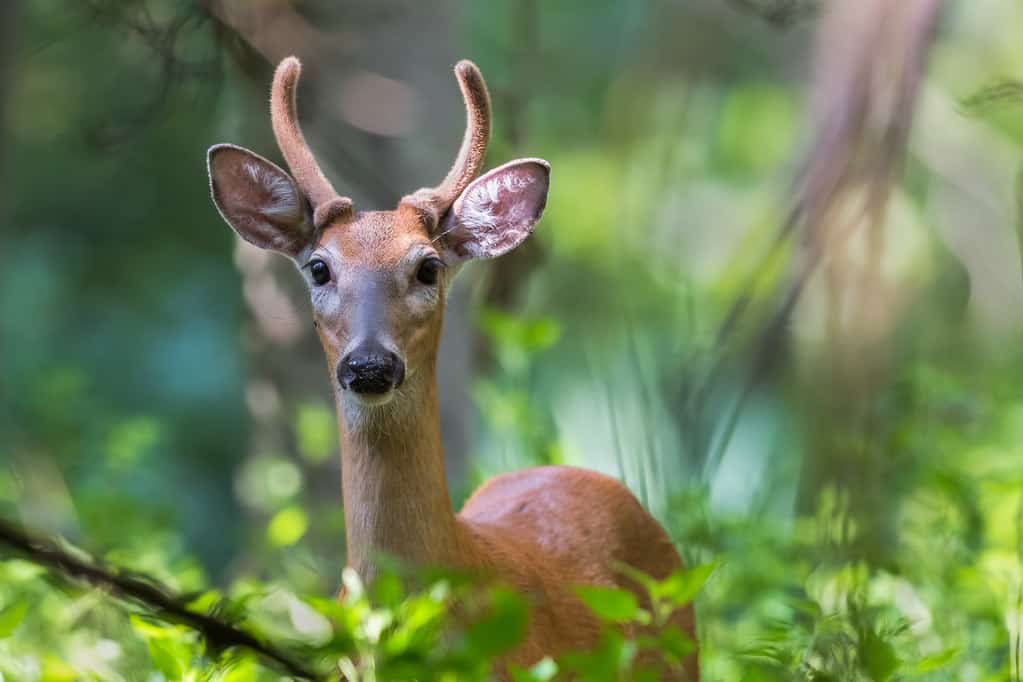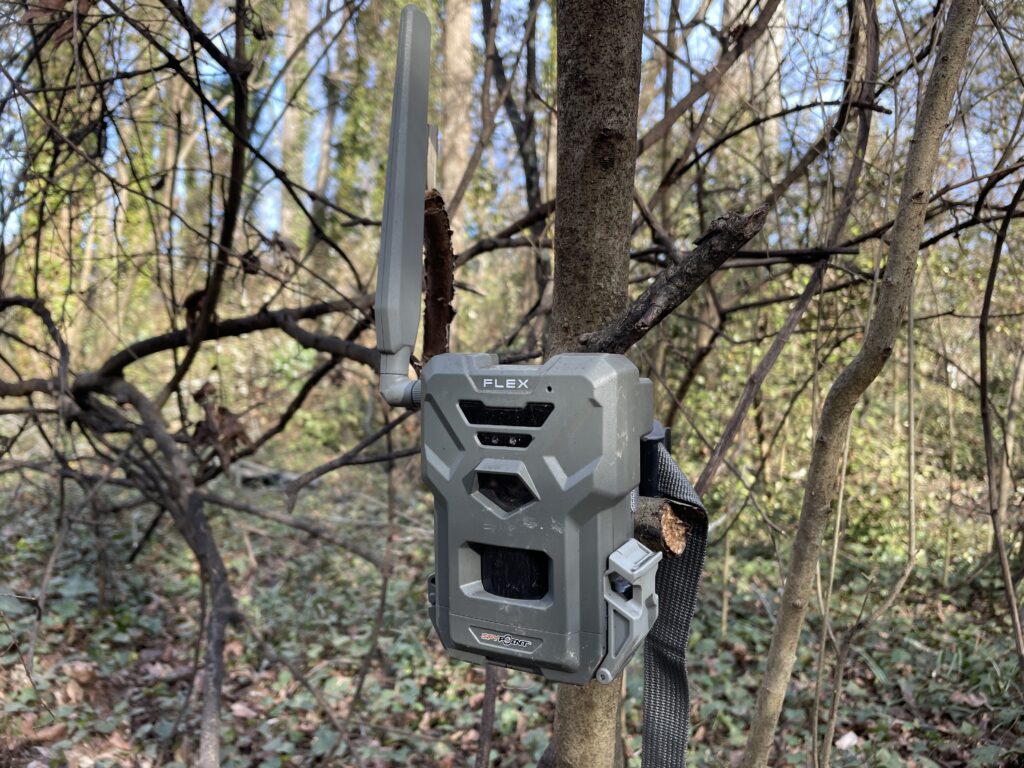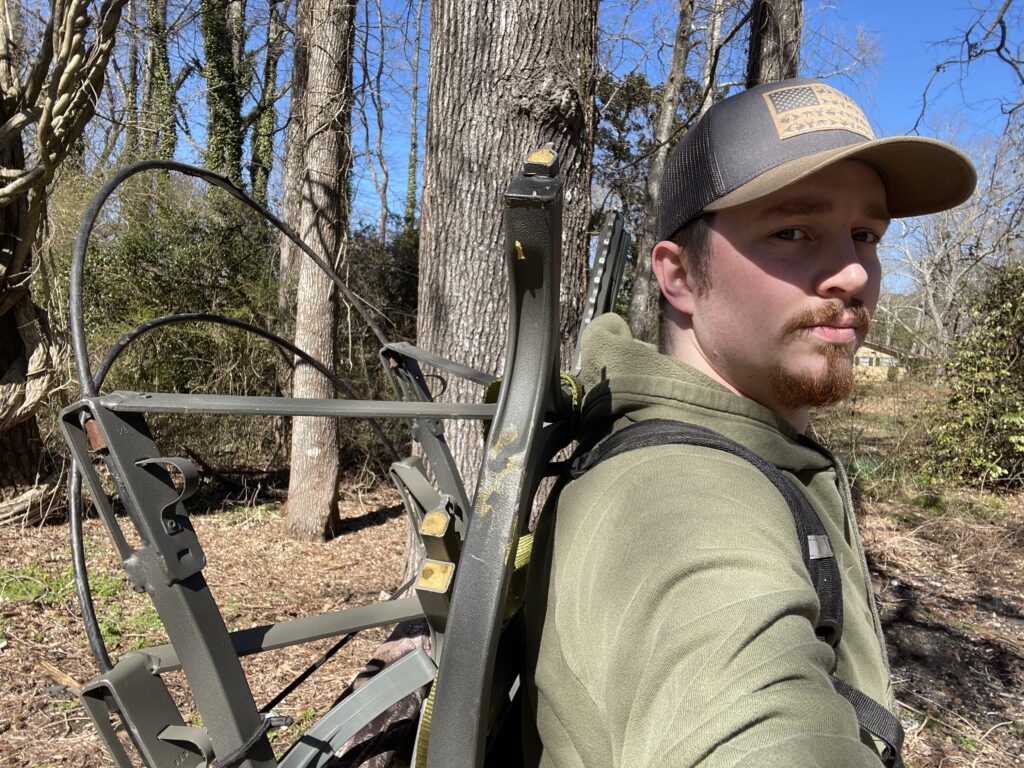A buck in velvet is a trophy most hunters only dream of getting the opportunity to wrap a tag on. There is something about velvet antlers that fascinates even the most seasoned deer hunter. However, hunting them hinges on the timing of hunting season.
Beginning in the spring, buck antlers are covered in velvet. Underneath the antlers will continue to grow and calcify until the velvet is shed usually by the second week of September. This time frame is unfortunately when most states have closed hunting seasons, leaving very little opportunity to harvest one.
Fortunately, there are a few states that allow for hunting during the time when velvet is prevalent. This article will provide a breakdown of the best places for hunting velvet bucks as well as strategies to increase your chances of success in the early season and hopefully send you home with a velvet buck worth bragging about.

What is Antler Velvet Anyway?
The velvet contains blood vessels, skin, and short hairs that supply nutrients and minerals to the growing antlers underneath while also serving as protection. This velvet will cover the antlers throughout their growth until they calcify and harden, when at that point the velvet is shed.
Antlers are very susceptible to damage while growing and the velvet also serves as a sensory alarm for the deer to make them aware of possible obstacles that may damage their antlers or possibly cause bodily harm from excessive bleeding.
Where to Hunt Velvet Bucks
Getting the opportunity to harvest a buck in velvet is rare. Most states are not open to hunting early enough to ever see a buck in velvet from the stand. Fortunately, there are still options, and if harvesting a velvet buck is on your bucket list it may be time to head out to one of these 8 states.
For each state, I listed out their season opening date and license cost for 2023. These values are obviously subject to change, so make sure to check the current year’s regulations before you go flinging arrows at velvet bucks in a new state.
Kentucky
| Season Opener | September 1 |
| Weapons Allowed | Archery and Youth/Senior Crossbow |
| Nonresident Tag Cost | $335 |
| Resident Tag Cost | $62 |
Kentucky starts its archery season on September 1st and tags can be purchased over the counter. The highest deer densities are found in central and northern portions of the state and there is plenty of public land if you strike out getting permission on private land. Hunters enjoy a 35 percent success rate and a great opportunity at Boone and Crocket caliber bucks all over the state.
Wyoming
| Season Opener | September 1 |
| Weapons Allowed | Archery/Crossbow |
| Nonresident Tag Cost | $374 + $15 (application fee) |
| Resident Tag Cost | $42 + $5 (application fee |
Wyoming begins its archery season on September 1st. There are copious amounts of public land accessible to everyone and private land accessible through permission or a trespass fee. Whitetails are found throughout the state with the Northeast offering the best opportunity.
Be sure to consult the Wyoming laws and tag applications and contact Wyoming Game and Fish Department to make sure you have everything you need to hunt there. It is a confusing state to figure out and you may need preference points to draw your desired areas.
Montana
| Season Opener | September 2 (September 3 for HD150 and HD280) |
| Weapons Allowed | Archery |
| Nonresident Tag Cost | $709 + $35 (other fees) |
| Resident Tag Cost | $16 + $28 (other fees) |
Montana has a vast amount of public hunting land and deer numbers are good throughout, especially in Northwestern portions. Like Wyoming, it is a confusing state to figure out, so contact Montana Fish, Wildlife, and Parks to make sure you have what you need. Unfortunately there are no over the counter tags available for nonresidents so you must apply by April 1st and draw a tag to hunt.
Nebraska
| Season Opener | September 1 |
| Weapons Allowed | Archery/Crossbow |
| Nonresident Tag Cost | $285 |
| Resident Tag Cost | $37 |
Nebraska has plenty of public land as well as land available to hunt that is in the Open Field and Waters Program and the Walk-In Access program. Tags for most zones can be purchased over the counter and the success rate is about 24 percent for archery hunting.
North Dakota
| Season Opener | September 1 |
| Weapons Allowed | Archery |
| Nonresident Tag Cost | $272 |
| Resident Tag Cost | $31 |
For North Dakota, tags are available over the counter and there is public land spread throughout the state as well as private land that is known to be relatively easy to gain permission on. The areas South and West of the Missouri River hold the highest deer densities. Land access makes North Dakota a great state to head to and chase velvet bucks.
Idaho
| Season Opener | August 30 |
| Weapons Allowed | Archery |
| Nonresident Tag Cost | $618.50 |
| Resident Tag Cost | $60 |
Idaho may just be the best state to hunt whitetails in the west and with about 66% of its land open to public hunting it offers plenty of opportunity. On top of that the success rate is a whopping 40 percent. Check areas North of the Salmon River for the highest deer numbers.
South Carolina
| Season Opener | August 15 in zone 3 and zone 4 |
| Weapons Allowed | Archery/Crossbow and Firearms |
| Nonresident Tag Cost | $275 |
| Resident Tag Cost | $18 |
South Carolina has a thriving deer population and zones 3 and 4 open up in mid August for archery as well as firearms, just be sure to check the zone as opening days for firearms differ. There is a lack of public land and private land permission is difficult to obtain so you may be forced to hunt with an outfitter.
Tennessee
| Season Opener | August 25-27 special velvet season |
| Weapons Allowed | Archery (Statewide) and Firearms (CWD Unit only) |
| Nonresident Tag Cost | $305 (other WMA permit fees may apply) |
| Resident Tag Cost | $33 (other WMA Permit Fees may apply) |
Tennessee offers a 3 day archery velvet season in Units A, B, C, D, L and allows hunters to use firearms during this time only in the CWD unit. There are plenty of deer here but public land is limited and private access is difficult to obtain.
If you plan on hunting a velvet buck in a state other than your own, you really need to check out my other article about planning an out of state hunt, especially if you haven’t done it before: How to Plan an Out-of-State Hunting Trip [In 6 Steps]

Summer Scouting for Velvet Bucks
During the summer months bucks are relatively easy to pattern as their movements are very predictable. They will spend time in bachelor groups and focus on food, water, and bedding without the distractions of the breeding season. To have a successful hunt, figuring out these summer patterns is necessary.
First and foremost, find the food sources. Food is most abundant at this time and bucks are easily found by glassing fields or other preferred food sources. Glassing from the road is fine, but don’t be afraid to get out and take a walk to find hidden food away from other hunters’ hungry eyes. Bring a set of binoculars and get somewhere you can observe from a distance.
Trail cameras are extremely handy for patterning mature bucks. They are always watching even when you are not physically there. Cellular cameras have made scouting even better since you do not have to disrupt an area to switch sd cards, and leave your scent behind. So, if they are legal in your state it would be a great idea to use them.
Using cameras strategically to figure out the travel patterns is extremely helpful but total reliance on cameras may be a mistake. Deer may be walking behind the camera or they may be “camera shy” which has been proven in some cases.
To effectively and strategically use cameras and limit the risk of pressuring the deer, it is best to put them as close to food as possible and slowly work them closer to where you think the bedding is until you have found a spot where they move in daylight. Busting into the bedding cover may cause them to move out or change their travel route.
If you need to build up an arsenal of trail cameras before the season starts, check out this review I did on my favorite cellular trail camera: SpyPoint FLEX Trail Camera [Hands-on Review]

Since food is what makes them get on their feet this time of year, finding the preferred food source and bedding area will drastically increase your success more than at any other point in the season. The pattern they develop in early summer will hold true until they shed their velvet and begin to transition over to their fall patterns and individual home ranges.
It’s been said before, but it rings especially true this time of season; if you know where a deer’s bedding and you know where a deer’s feeding, that deer should be dead.
Early Preparation for Early Season
To hunt velvet bucks, you’ve got to hunt early in the season so you’ve got to be prepared earlier than usual. Your stand or setup locations will likely differ from those during the fall after velvet is shed and especially when pre-rut activity begins. So don’t wait until August to get your stands hung and shooting lanes cleared, that is when you should be chasing velvet.
If you hunt with a traditional hang on, climber, or ladder type tree stand, get it in place as soon as possible and clear out all possible shooting lanes, then stay out until it is time to hunt. If you hunt with a saddle or from the ground try to get your area prepared and do any modification of the area far in advance so as to not disturb their summer pattern.

Hunt Food Sources
In order to kill a velvet buck in the late summer you need to be hunting on or around food, whether it is on their way to food in the late afternoon or on their way from food in the early morning. If you have already done your scouting you will have these preferred food sources pinpointed, then it’s just a waiting game and picking the right stand on the right day.
Summer crops such as soybeans, alfalfa, clover, corn, soft mast trees and even early dropping acorns and beech nuts, just to name a few, will be magnets to whitetails depending on what part of the country you are in. Seek these out and set up on their travel route to catch them heading out for a meal or in for a nap.
In places with limited food, building a food plot may be very beneficial to your overall success. There are several ways to put in food plots, even if you don’t have large acreage and fancy expensive equipment, using no-till methods allows anyone to put one just about anywhere with a little bit work.
Baiting although frowned upon by many is also a tried and true method if your state laws allow. Hunting over bait can make for a pretty eventful afternoon in the stand. In order to be effective you will want to establish a site as early as possible and be consistent.
I talk a good bit about baiting and which baits are most effective in my other article here: 20 Cheap Ways to Attract Whitetail Deer [Short & Long Term]
Get Your Feet Wet
Often in the late summer there is a limited amount of water. Deer need to drink water to survive and on average will consume 3-5 quarts per day, so seeking out water sources or adding a water hole to a food plot if you have that luxury may be beneficial to an early season hunt.

Scout water holes just as you would a food source, again glassing from a distance or using trail cameras is an excellent way to figure out the times bucks are visiting and the routes they take to get there. Finding a well visited water hole in an area of limited water will be a gold mine and almost certainly allow you to tag an early season velvet antlered buck.
Predictability
Other than late winter in Northern climates deer movements are the most predictable in the summer. It is a guarantee that they will be bedded most of the day and head to food when the sun wanes and it starts to cool down and head to bed before the sun is high in the sky. The only things that influence movement at this time are weather, food, and outside pressure.
Many people prefer the rut to kill a buck, but the unpredictability of the rut can make killing a target buck difficult. For this, the late summer is best and you get the added bonus of having your target bucks’ antlers donned in velvet.
Collect intel from a distance, there is no need to risk pushing through bedding areas if you already have a handle on their summer patterns. Pick an access route with the least amount of human intrusion. If this means an extra long walk, then do it. You don’t want to push a predictable deer away.
Preserving Your Trophy
Congratulations, you have harvested a velvet whitetail, now what? How do you save the velvet? Well, the earlier in the season the easier it is to protect, but as the antlers become fully developed the velvet gets thinner and weakens causing it to tear and slip more easily.
The best thing to do is to wrap the antlers in some type of clothing or spandex and pad them to protect the velvet during the drag out. You definitely do not want to use the antlers as handles when you are dragging him out. I suggest using a deer sled and making sure the antlers are fully laying in it so nothing hits them.
It is then best to take it to a taxidermist and have them freeze dry or treat it with a chemical, although there are products on the market that may also work well to preserve it yourself but some things are better left to a professional. If the velvet tears accidentally, there is an artificial velvet that can be applied and colored that looks and feels like the real thing. Take care of the antlers, after all this is the reason you are chasing velvet bucks.
Chasing Velvet
For those that have hopes of one day harvesting a velvet buck, it seems that more states are seeing the popularity. Most recently, the Oklahoma senate has approved a measure to allow a velvet buck season. So who knows, your state may just be the next to come.
Although the 8 states highlighted in this article offer the best opportunity to harvest a velvet buck, this feat can still be accomplished in states with later openers. Many velvet bucks are still harvested in the middle of September, so don’t get down and out because you may just be one of the lucky ones.
If your dream is chasing velvet then get out there in the early season or get to one of the states highlighted in this article. Make sure to do your summer scouting, get prepared early. Hunt smart, don’t cut corners and you too may be giving a velvet buck a ride home.
Thank you for reading my article! I hope you enjoyed it, and if you have any questions or feedback, please send me an email at Patrick.Long@omegaoutdoors.net. If you want to learn more about me or Omega Outdoors, visit my About Page. Otherwise, I hope you have a great day, and check out some of my other articles while you’re here!
